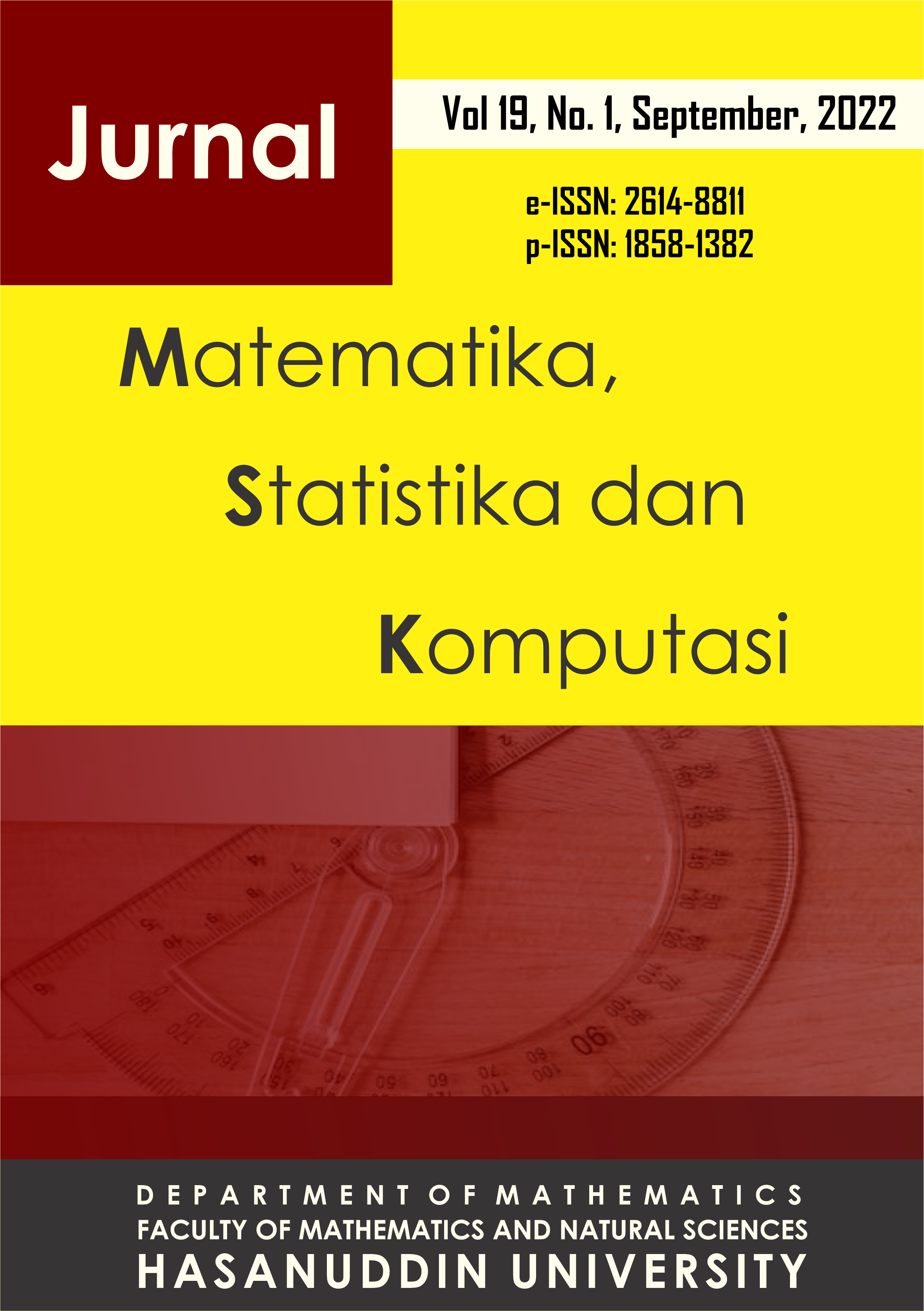The GRDP Per Capita Gap between Provinces in Indonesia and Modeling with Spatial Regression
DOI:
https://doi.org/10.20956/j.v19i1.20997Keywords:
economic inequality, GRDP per capita, spatial regressionAbstract
Gross Regional Domestic Product (GRDP) is one of the key indicators to determine the economic conditions in an area within a certain period, both based on current prices and constant prices. The GRDP per capita shows the value of GRDP divided by the mid-year population. According to data from Statistic Indonesia (BPS), the distribution of GRDP is concentrated in Java. About 59 percent of Indonesia's economy in 2021 was contributed by Java. The contribution of other islands is not more than 10 percent, except for Sumatra at 21 percent. One of the government's policies to equalize the economy announced in 2019 was the relocation of the nation's capital city from DKI Jakarta to East Kalimantan. This policy has generated polemics in various circles of society regarding priorities, urgency, procedures, and risks. The economic inequality between regions in Indonesia involves various regions or provinces with different characteristics. Spatial regression is a model that accommodates spatial effects because the observation unit is a location. The aim of this study is to determine the level of economic disparities between provinces in Indonesia, resulting in the decision to relocate the nation's capital city. In addition, the aim is to determine the significance of several factors that affect GRDP per capita as a measure of regional prosperity, namely population density, number of workers, and the Human Development Index.Downloads
References
A’laa, R. D. & Sutikno, 2018. Pemodelan Faktor-Faktor yang Memengaruhi Gini Rasio Pembangunan di Jawa Timur dengan Regresi Spasial. Jurnal Sains dan Seni ITS, Volume 7, No. 2.
Abdo, A.-B.et al., 2020. Influence of FDI on environmental pollution in selected Arab countries: a spatial econometric analysis perspective. Environmental Science and Pollution Research.
Amidi, S., Majidi, A. F. & Javaheri, B., 2020. Growth spillover: a spatial dynamic panel data and spatial cross section data approaches in selected Asian countries. Future Business Journal, Volume 6, pp. 1-14.
Anselin, L., 1988. Spatial Econometrics Method and Models. Netherland: Khiwer Academic Publishers.
BPS, 2022. https://bps.go.id. [Online] Available at: https://bps.go.id/subject/52/produk-domestik-regional-bruto--lapangan-usaha-.html#subjekViewTab1 [Accessed 14 06 2022].
BPS, 2022. Produk Domestik regional Bruto Provinsi-Provinsi di Indonesia Menurut Lapangan Usaha 2017-2021, Jakarta: Badan Pusat Statistik.
Burnham, K. P. & Anderson, D. R., 2002. Model Selection and Multimodel Inference. New York: Springer-Verlag.
Dewi, C. & Ekaria, 2022. Determinan Capaian Pembangunan Kabupaten/Kota Jawa Tengah Tahun 2019. Jurnal Matematika, Statistika, dan Komputasi, Volume 18, pp. 274-292.
Furková, A., 2021. Implementation of MGWR SAR models for investigating a local particularity of European regional innovation processes. Central European Journal of Operations Research.
Gujarati, D. N. & Porter, D. C., 2009. Basic Econometrics (Fifth Edition). New York: McGraw-Hill/Irwin.
Handayani, N. S., Bendesa, I. & Yuliarmi, N. N., 2016. Pengaruh Jumlah Penduduk, Angka Harapan Hidup, Rata-Rata Lama Sekolah dan PDRB Per Kapita Terhadap Pertumbuhan Ekonomi di Provinsi Bali. E-Jurnal Ekonomi dan Bisnis Universitas Udayana 5.10.
Maisaroh, M. & Risyanto, H., 2018. Pengaruh Investasi, Pengeluaran Pemerintah, dan Tenaga Kerja Terhadap PDRB Provinsi Banten. Jurnal Ekonomi dan Bisnis, Volume 1, No. 2, pp. 206-221.
Miranti, R. C. & Mendez-Guerra, C., 2020. Human Development Disparities and Convergence across Districts of Indonesia: A Spatial Econometric Approach. Munich Personal RePEc Archive Paper.
Ningtias, I. P. & Rahayu, S. P., 2017. Pemodelan Faktor-faktor yang Mempengaruhi Pemodelan Faktor-faktor yang Mempengaruhi Pemodelan Faktor-faktor yang Mempengaruhi. Jurnal Sains dan Seni ITS, Volume 6, No. 2.
Ranis, G. & Stewart, F., 2016. Successful Transition towards a Virtuous Cycle of Human Development and Economic Growth: Country Studies. Economic Growth Center Yale University, Issue Economic Growth Center Discussion Paper Series .
Razali, N. M. & Wah, Y. B., 2011. Power comparisons of Shapiro-Wilk, Kolmogorov-Smirnov, Lilliefors and Anderson-Darling tests. Journal of Statistical Modeling and Analytics, Volume 2 No.1, pp. 21-33.
Sjafrizal, 2012. Ekonomi Wilayah dan Perkotaan. Jakarta: PT Rajagrafindo Persada.
Downloads
Published
How to Cite
Issue
Section
License
Copyright (c) 2022 Author and publisher

This work is licensed under a Creative Commons Attribution 4.0 International License.

This work is licensed under a Creative Commons Attribution 4.0 International License.
Jurnal Matematika, Statistika dan Komputasi is an Open Access journal, all articles are distributed under the terms of the Creative Commons Attribution License, allowing third parties to copy and redistribute the material in any medium or format, transform, and build upon the material, provided the original work is properly cited and states its license. This license allows authors and readers to use all articles, data sets, graphics and appendices in data mining applications, search engines, web sites, blogs and other platforms by providing appropriate reference.








